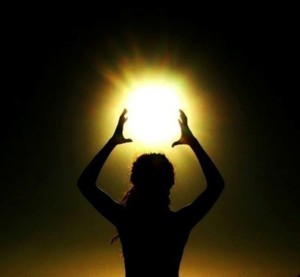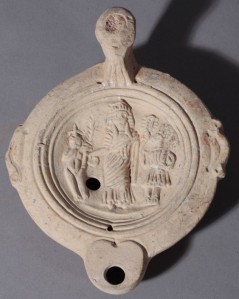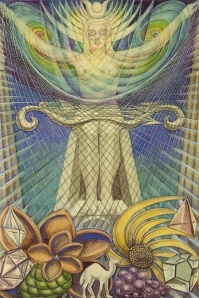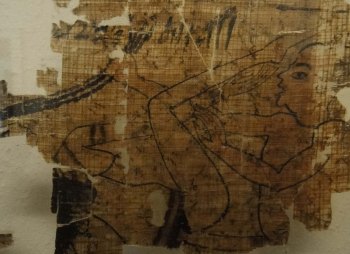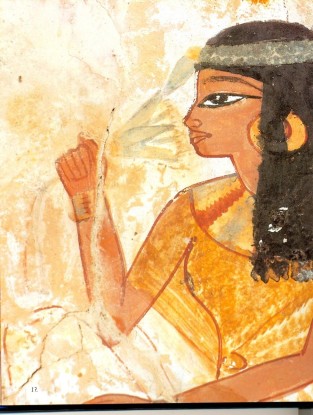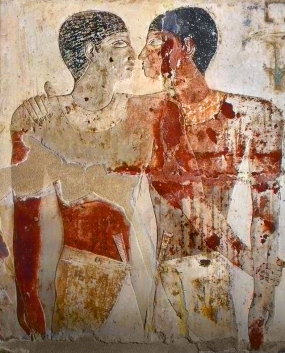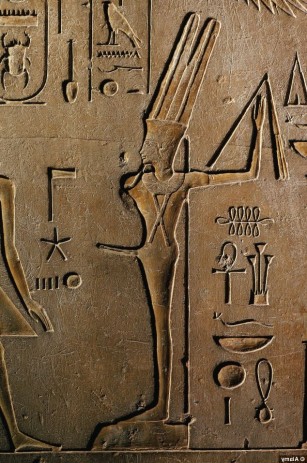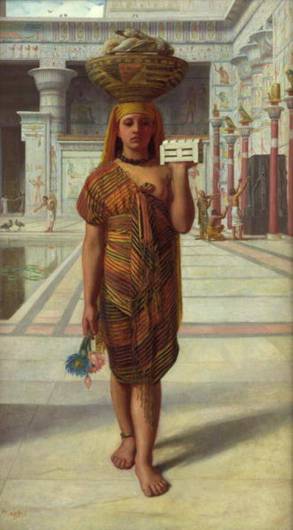The festival starts this coming Friday. The weather forecast is perfection. The ritual cast is rehearsed. We are ready to go and can’t wait to see those of you who can make it. Still time to register!
The Pacific Northwest is ON for an Isis-themed Fall Equinox Festival (Sept. 24-26, 2021). This is not the same festival we were planning for 2020. That one was much more…involved…shall we say. This one is a gentle way of coming together once again as a community. So I’d like to share with you the write up for the festival, then I’ll repost something on Making Offering in the Egyptian way that will be related…
Offering to Isis: A Fall Equinox Celebration of the Goddess and of Community
If you asked the ancient Egyptians, the act of Making Offering was one of the things that maintained Ma’et, that which is Right and True. Offering helped keep the world in balance. Making Offering is part of the great reciprocal flow between the Divine and the human. It is one of the most important ways we communicate with our Goddesses and Gods. It is hallowed by tradition. It is empowered by magic.
As we turn the wheel at this Fall Equinox, let us come together in rituals of offering. Under the Wings of the Great Goddess Isis, let us gather in a celebration of our reentry into and reconnection with Community. In the presence of Isis Myrionymos, Myriad-Named Isis, Goddess of the Ten Thousand Names, let us gather with open hearts and generous spirits to Make Offering.
As we human beings have always done—from the First Time, the Zep Tepi—we shall give gifts to Isis and we shall receive gifts from Her.

We are living through extraordinary times. Many of us have gone through intense changes. There have been painful losses. And there have been surprising gains. Through Rites of Offering, we can give thanks, mourn losses, and ask for aid. We can find Divine connection and reawaken our hearts.
The Rites of Offering
Our rituals are inspired by the Daily Offering Rites worked in ancient Egyptian temples. We will come together four times, at the cross-quarters of the Holy Day and Sacred Night, to Make Offering to the Goddess in four of Her myriad names.
Yet, as a Community, we are many different people, on many different paths, who honor many different Deities. And so the Iset Weret— the Great Throne Altar of Isis—will welcome all our Divine Ones. If you wish, you are invited to bring an image or symbol of your own Divine One/s to add to the Great Altar that They may receive Offering as well.
Now, Let’s Celebrate
This festival is intended to give us plenty of open time so that we can be together…for feasting, drumming, dancing, and just relaxing. No formal workshops are planned.
Come join us in this Fall Equinox celebration as, under the Wings of Isis, we come together as a Community once more.
Now here’s a little something about Making Offering…
****************************************
Can Isis smell the flowers we place upon Her altar? Does She eat the delicacies we so carefully arrange upon Her offering mat? Does She drink the wine we pour into a beautiful cup and lift to the smiling lips of our sacred image?
Well, no.
And, yes.
Although I have had weird phenomena happen with offerings—for instance, once an entire two-ounce packet of incense (you DO know how much two ounces of powdered incense is, right?) was apparently incinerated without leaving a whiff of scent in the air of our tiny temple space—usually, the flowers wither naturally, the food dries to inedibility, and the wine evaporates.
So did the Goddess receive Her offerings or not?
For the ancient Egyptians, the sacred images of the Deities were sacred precisely because they were filled with some measure of the Deity Her- or Himself. Offerings to Isis were received by this bit of the Goddess residing in the image, and through it to Her greater Being.
The main spiritual mechanism for the transfer of an offering from offerent to Deity was the ka, or vital, life energy. All living beings—Deities, human beings, animals, fish, plants, stars, mountains, temples—have a ka. The kas of the Goddesses and Gods are extremely powerful. In one Egyptian creation myth, the Creator Atum embraces His children, the God Shu and the Goddess Tefnut, with His ka in order to protect Them from the primordial chaos of the Nun into which They were born—and, importantly, to transfer His ka to Them, giving Them life. Ka energy exists before a being comes to birth, is joined to that being at birth, lives with them throughout life, then travels to the Otherworld after death. The tomb became known as the Place of the Ka (among many other designations) and to die was to “go to one’s ka.”
The ka “doubles” the person physically, yet the ka is not essentially personal. It is held in common with all living things—including the Deities. The ka was the ancient Egyptian’s connection to a vast pool of vitality greater than the individual person.
But that’s not the end of it. One meets one’s ka after death where it can continue to protect.
Utterance 25 of the Pyramid Texts says that the dead king “goes with his ka.” Just as a list of Deities “go with Their kas,” so does the king:
“You yourself also go with your ka.
O Unas, the arm of your ka is before you.
O Unas, the arm of your ka is behind you.
O Unas, the leg of your ka is before you.
O Unas, the leg of your ka is behind you.”
You might recognize this formulation. It is a common magical formula for invoking protection on all sides; similar to casting a circle or the Lesser Banishing Ritual of the Pentagram or part of the so-called Breastplate of St. Patrick (“Christ at my right. Christ at my left, etc.”)
Even though ancient Egyptians could experience the ka as separate from themselves, the ka also connected the person with the long line of humanity—for the ka was associated with the ancestors. In fact, the ancestors were thought to be the keepers of ka energy. Jeremy Nadler suggests that when people died, the Egyptians believed that they returned to the ka-group of ancestral energy to which each person naturally belonged. In other words, after death, the ka returns to its family.
This meant the living had several reasons for making offering to their ancestral dead. As we all do, they wanted to remember loved ones who had died. The offerings provided their ancestors’ kas with the nourishment required to keep the family spirit strong. But since the ancestors had ready access to the greater pool of beneficial ka energy and could bestow it on the living, people could also ask their ancestors to send them a blessing. A blessing of ka energy could nourish human beings, animals, and crops alike.
As usual in Egyptian society, the king was a special case. He could have multiple kas. He also had more intimate contact with the powerful ka energy of his royal ancestors than the average person had with their familial kas. The royal ka was especially connected with the power of the God Horus. By the time of the New Kingdom, the king’s ka was specifically identified as Harsiese, “Horus, son of Isis.”
In Egyptian, the word ka is related to numerous words that share its root. Egyptian words for thought, speech, copulation, vagina, testicles, to be pregnant and to impregnate, as well as the Egyptian word for magic (heka), all share the ka root. And all have some bearing on the meaning of ka. Ka is also specifically the word for “bull” and “food.” Connections such as these reveal mysteries. Ka is also the bull because it is a potent, fertile energy that contains the ancestral seeds that connect us with our families. Ka is also food for it is the energy that nourishes life, in both the physical and the spiritual realms. Ka is intimately connected with offering; the plural of ka, kau, was used to mean “food offerings.” Sometimes the ka hieroglyph replaces the images of food inscribed on offering tables.
Kau, food offerings, provide life-energy for the individual ka. When the Egyptians offered food to their Deities or honored dead, they were offering the ka energy of the food to the ka of the Deities or ancestors. The ka inherent in the kau nourished the ka of the spirit being. Offering thus feeds the kas of the Deities and ancestors and the great pool of ka energy to which all enlivened things are connected. Simultaneously, the great pool of ka energy is the source of the energy found in the offerings by virtue of the ongoing, archetypal connection with it. By making and receiving offering, a great reciprocal power system was set up and could be eternally maintained. No energy was ever lost; it was continually transformed and re-activated by being offered and received, received and offered. Ka energy may be considered the food that fuels the engine of the living universe.
Since offerings are given and received ka to ka, it is no wonder that the Egyptians who made offering before the sacred images in the temples, did not expect the Deity to physically consume the food or drink offered. Instead, they expected the Deity’s ka, residing within the image, to take in the energy from the kas of the offerings. Ancient texts are explicit about this. A text from Abydos says that the pure, Divine offerings are given daily “to the kas” of the temple Deities. Sometimes the Deities are said to have been “united” with Their offerings. It is the ka of the offering and the ka of the Deity that unite. In another text from Abydos, the king asks the Deity to bring His magic, soul, power, and honor to the offering meal. Clearly, the king is not expecting a physical appearance, but a spiritual one.
It is the same with our offerings. We offer the ka of the kau to Isis and Her ka receives it. We can open our awareness to this aspect of offering by envisioning the ka, perhaps as Light, move from the offering to our sacred image of Isis (if we are using one) or to an image of Her we hold in our mind’s eye. In this way, we can know that Isis has indeed received what we offer to Her.











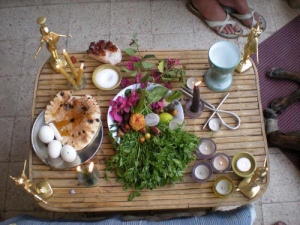


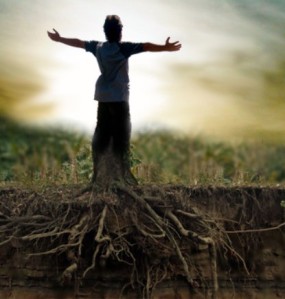





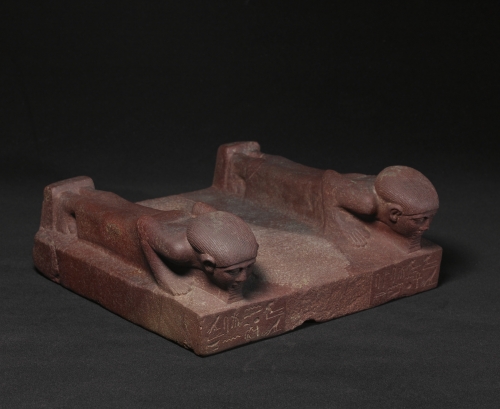
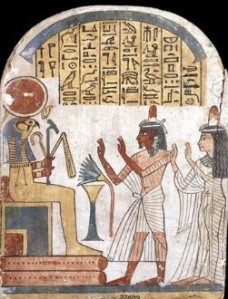







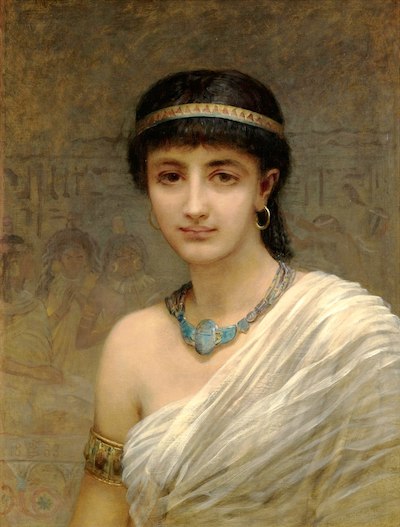


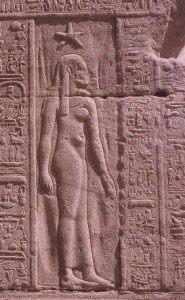
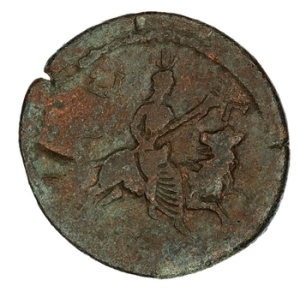
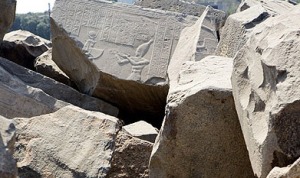
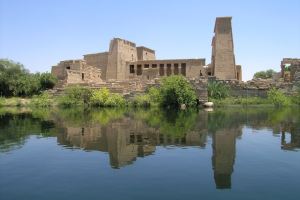












 As the days grow longer, a certain soft joy fills me.
As the days grow longer, a certain soft joy fills me.